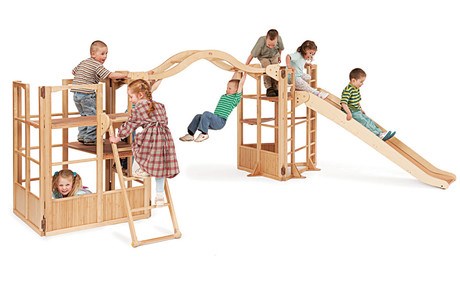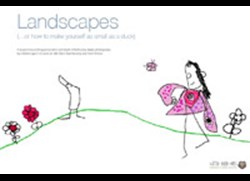Nursery Equipment: Durability - Toughening up
Monday, May 16, 2016
Although it’s tempting to buy either cheaper items or those intended for domestic use, settings will be better off in the long run with heavy-duty, nursery-friendly furniture. By Annette Rawstrone

Early years settings are full of active, inquisitive and adventurous children, which means that the furniture and big-kit items that you purchase for your setting need to be well crafted from good-quality materials to ensure they withstand being banged, scrubbed, moved and jumped on.
Sue Jones, owner of Evolution Childcare, says that her key requirements when buying furniture are that it is hard-wearing, versatile, safe and easy to clean. ‘There is nothing worse than buying a piece of furniture and it getting marked or stained with the materials and resources that an active nursery room offers as part of its continual provision requirements. Quality, quite simply, is key,’ she says. ‘We have to be practical and make sure it’s robust enough to meet the daily rigours and requirements of a busy room.’
The secret to making the most of the budget available, according to Lorraine Brown, head of operations at A Step Ahead, is to purchase equipment that is both durable and adaptable. Play-based learning means that furniture is often being moved around and reconfigured – to divide areas or pushed against the wall to create floor space. This means that there is an even greater need for it to be well constructed because it will come under increased strain from the frequent movement.
‘Guarantees of workmanship are also really important so that you have recourse if the product does not meet the standards you would expect,’ adds Ms Brown. ‘Community Playthings has built its business on the 10-year guarantee and we also purchase from TTS because it guarantees the equipment meets EY standards. We recently saw an Ofsted report that outlined that the equipment being used [at one setting] was not durable and suitable for nursery use, therefore it was a safeguarding issue. The nursery was closed down.’
Heavy-duty furniture and equipment can be more expensive, but Ms Jones says that she has regretted choosing cheaper options in the past. They have not lasted as long and ended up being more costly long-term. ‘The saying “buy cheap buy twice” sums this point up nicely. I view everything now with the opinion – would I have it in my own house? – and it has to be a yes,’ she advises. ‘Purchasing equipment that is made from tough, safe, durable and strong material really is important as it will pass the test of time and the volume of high traffic that a nursery sustains.’
So how can you ensure that you’re getting the most durable furniture that your budget will stretch to?
WHAT WOOD TO BUY?
Structurally it is best to buy solid wood because it is more hard-wearing and holds fasteners better – especially good if the item will be moved frequently.
When buying solid wood, check the product for knots, which are susceptible to cracks.
If you can’t afford solid wood then consider purchasing furniture made from a high-quality plywood – manufactured from thin layers of wood veneer glued together – such as birch; or with a veneer – a thin piece of premium wood covering a lower-quality base.
If purchasing furniture made from plywood, get it with as many layers as possible – nine is a good guide.
Be aware that items not made from solid wood are likely to have edge-banding, which can come loose from frequent knocks or children picking at it.
Avoid particleboard, pressed wood or fibreboard, such as MDF, which easily absorb water.
HOW SHOULD IT BE MADE?
Opt for furniture which has mortise-and-tenon, rabbet or dovetail joints.
Blocks on the inside angle can reinforce corners.
Wooden dowels or screws are good.
Avoid furniture fastened together with staples or nails.
Try lifting an edge of the item to see if it creaks or moves and check for wobbles.
Single-piece chairs ensure parts can’t come loose from movement.
If chairs are going to be used at mealtimes, avoid cracks or gaps where food may lodge.
Choose furniture with a high-quality finish, such as a water-based varnish, that will withstand frequent cleaning.
Tables used for artwork or mealtimes need to be finished with a hardwearing surface, such as melamine, to reduce scratching from cutlery and staining.
Metal castors hold more weight and are more durable than plastic ones.
WHAT CUSHIONS TO BUY?
Foam fillings can give the firmest feel and keep their shape best.
Feathers are not advisable in a nursery because of allergies.
Choose cushions with covers that can be removed for washing, and in shower-proof fabric if they may be used outdoors.
If items have matching cushions, ensure individual cushions can be bought for when replacing them.
Synthetic fabrics, such as acrylic, are good for outdoor use because they resist mildew.
Exposure to sunlight can discolour fabric unless it is treated to block UV rays.
WHAT OUTDOOR FURNITURE TO BUY?
Anything to be used outdoors needs to be weatherproof.
Moisture can weaken and rot wood, so buy treated wood that will repel water (but ensure it has been treated with child-safe materials).
Aluminium does not corrode, but other metals will rust if they are not galvanised.
Be aware that UV rays will change the colour of plastic equipment.
Avoid furniture that has been fixed together using staples or glue.
Screws should be brass or stainless steel to resist rust.
Take care with blown plastic outdoor equipment such as tunnels and slides. Hairline cracks can develop, allowing them to fill with water, making them heavy to move.
OTHER CONSIDERATIONS
 Ask how items have been stress-tested and what wear and tear they are expected to withstand.
Ask how items have been stress-tested and what wear and tear they are expected to withstand.
Check the warranty of an item and whether the supplier will be able to repair or replace any components.
Don’t buy products for domestic use because they are unlikely to be fit for purpose in a nursery setting.
Use education sector suppliers – preferably those experienced in the early years – because furniture is used differently in nursery settings than school classrooms.
Ensure that products are being used and maintained correctly in order to protect their lifespan.
Check product guides for whether outdoor equipment needs to be stored in a dry place or can be left out overnight.
Flat-packed furniture tends to be more flimsy than ready-assembled items, as well as frustrating and time-consuming.
CASE STUDY: STEPHANIE MOLNAR, DIRECTOR, ELMSCOT GROUP
‘In our experience, buying cheaper is a false economy. We learnt this when setting up our first nursery when we tried to make our tight budget stretch further. We’ve also learnt not to buy anything clearly intended for domestic use even if it costs less. It’s likely to be more flimsy and won’t last in a nursery.
‘Now we always buy solid wood furniture. MDF absorbs water and cleaning solutions, expands over time and the coating then flakes off. We also avoid things with painted surfaces because nursery furniture needs cleaning very frequently and the paint soon wears.
‘Community Playthings are our preferred suppliers. Their furniture is made from solid wood and some of it is still in daily use after more than 10 years. We have re-varnished some of the chairs because they get scrubbed frequently. We used yacht varnish, which is water-resistant and very tough.
‘It’s hard to gauge how hardwearing an item is online so, if you haven’t seen it in person, I’d advise using a company where returns are easy, and reading product reviews for comments on quality. If it’s a big investment piece that you haven’t bought before, ask the supplier if it has been supplied to another setting near you – then call and ask if you can take a look.
‘Perhaps my most important advice is that equipment can be misused by staff, which can affect its durability, so train them in its correct use and maintenance. Put expectations on your staff for them to role-model and teach children to respect the nursery property.’




